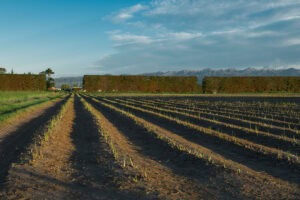Commercial robotic asparagus harvester on the way

The New Zealand Asparagus Council (NZAC) and Robotics Plus will work alongside New Zealand asparagus growers to develop a commercial-scale autonomous robotic asparagus harvester.
The harvest robot is help address ongoing labour shortages in the industry and support growers to tap into high-value export markets. The Government’s Sustainable Food and Fibre Futures (SFF Futures) fund is contributing US $ 1.85 million to the US $ 4.14 million project.
“We’re really excited to get this project underway as we simply don’t have enough people to do the work,” says Mangaweka Asparagus grower and NZAC Chair Sam Rainey. “Robotic harvesting will be a game-changer for the asparagus industry. It currently relies heavily on picking asparagus by hand, which is hard toil.”
Robotic asparagus harvester to help manage costs

An average picker will walk 10 kilometres per day, so it’s difficult to attract people to do the work. According to Rainey a commercial robotic harvester will also go a long way to helping manage costs.
Also read: Robotics Plus robotic apple packers to go global
Steve Saunders, CEO of Robotics Plus, says an autonomous asparagus harvester will allow New Zealand asparagus to have a more competitive offering in high-value export markets. “We’re excited to ensure we develop a solution that tackles challenges head-on”, he says. “It’s an ideal robotics project as green asparagus is conducive to automation as it grows above ground.”
Prototype harvester robot
The project builds on a prototype harvester robot developed by University of Waikato researchers with Robotics Plus. Over the last two seasons, Robotics Plus has supported the University of Waikato’s prototype asparagus harvester project led by Dr Shen Hin Lim, Senior Lecturer in Mechatronics and Mechanical Engineering.
We will deliver automation to the asparagus industry at a time when it desperately needs to remain sustainable
“These early prototypes have given Robotics Plus great insights into creating a next-generation commercial-scale asparagus harvester and has helped generate strong interest from the asparagus industry”, Saunders says. “We will deliver automation to the asparagus industry at a time when it desperately needs to remain sustainable and keep up with consumer demand for fresh produce.”
Text continues underneath video
Increase grower returns and exports
Advancing the project to a commercially available asparagus harvester will help increase grower returns and exports, says grower Geoff Lewis of Tendertips. “However, it’s not just the picking that is important; it’s all the other aspects this technology can bring to the industry, such as yield data and potential add-ons such as packing and even weeding.”

New Zealand Asparagus Council Business Manager, Karen Orr, says half of the cost of producing asparagus is labour. “We had thriving asparagus exports in the 80s and 90s, but that has reduced to almost no exports due to increasing costs, particularly for labour. There hasn’t been any investment in the industry’s future because grower returns have been decreasing.”
Fresh asparagus accounts for more than 74% of the global market share and has a compound annual growth rate of 3.1%. It is the fastest-growing fresh market vegetable per capita consumption throughout North America, with forecasts predicting the fresh market valuation close to US$ 30 billion by 2027.
Join 17,000+ subscribers
Subscribe to our newsletter to stay updated about all the need-to-know content in the agricultural sector, two times a week.



